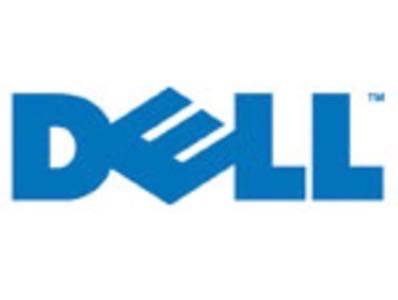The technologists behind large companies are always fascinating. Unlike entrepreneurs, who often code their vision into software, CTOs channel their vision through the engineers working for them. CTOs of modern media companies are measured on their ability to bring innovation to the market quickly. This installment of People in Tech features a unique technologist. Mike Dunn (LinkedIn, Twitter) was instrumental in bringing Dell computers online, was part of Time Warner during its merger with AOL, and is now leading media giant Hearst Corporation.

The interview presents Mike as an intelligent technologist and a strong leader, while also a humble and curious learner of modern technology. This curiosity and passion for tech has guided Mike’s impressive journey.
His story is an inspiration and it is our pleasure to connect you with Mike Dunn on ReadWriteWeb.
What is your background?
I’m an emerging media technologist. I’ve spent the latter half of my career as a chief technology officer for companies in media or technology.
I’ve always been an early adopter. I enjoy finding ways to adapt emerging media, trends, methodologies and technologies into a company. I’ve been attracted to change agent roles and opportunities.
I like the complexity of environments in the midst of change, where the need to implement innovation is necessary to grow or turn around anything from an entire company to an individual product opportunity.
I tend to be responsible for the technical assessment of Venture and M&A opportunities. I’m asked to manage strategic partnerships with technology companies, service providers and academic institutions.
I’m a director for a bank and an online ecommerce site, an advisor to a media marketplace startup, a b2b operating company, a major technology trade publication and an insurance industry information portal startup.
My portal glemak.com contains pointers to my bio and online activities.
You’ve been CTO of Dell Online, Time Warner and now Hearst. How did you evolve through these experiences?
My roles in each have been very different. My Dell role occurred just as ecommerce was striving for adoption, Time Warner occurred right in the middle of the bubble, and Hearst is occurring while the web is dynamically changing as it moves to massive online communities and the long tail of media.
Dell Online was an internal start-up championed by Michael Dell to lead the way for the entire enterprise, not only to build the online capability, but also to spread its adoption and utilization. We pointed the way for transitioning a company via ecommerce.

I was part of an excellent team tasked with designing and building a high availability transactional environment, and one which did it all with nascent ecommerce development tools.
I spent a great deal of time briefing customers and partners on the value of our approach to building the infrastructure and platform that represented the revolutionary change to selling securely via the web. This was early days of ecommerce and prior to the ‘all-in, spare no expense’ bubble. Employees and customers needed to be convinced Dell’s online efforts were safe and provided value.
When Time Warner approached me to become the CTO, I accepted since the reason I was hired at Dell had been satisfied. The site and team were built and stable, and the ecommerce transition had started to happen.
At Dell I learned how to plan and build for scale, how to partner with diverse technology units driven by multiple motivating factors, how to lead via influence, and how to educate and socialize the value of a complex paradigm shifting technological change for a company.
Time Warner was a huge role and opportunity. I’d spent time earlier working in technology management for Hanna-Barbera and Turner. Both became Time Warner properties after I’d left Turner in the early ’90s.

My role involved overseeing corporate technology assets and services such as the global WAN connecting diverse businesses, our messaging environment and corporate applications. I managed an IT team responsible for these functions, but that was only 20% of my job. The other 80% was strategic, seeking opportunities to leverage traditional and emerging technology initiatives across over 660 businesses.
I relied on virtual teams, groups of diverse experts loaned part-time from individual units so that Time Warner could leverage internal resources and expertise. We used consultants of course, but our SMEs were the leaders and guides.
Mid tenure the AOL acquisition occurred, causing us to realign our initiatives to deal with this massive merger event.
I learned a lot about strategic guidance via influence. It is better to spend time convincing folks about something you’d like to see change so that they adopt the idea as their own.
A valuable lesson I learned at Time Warner was never to get overwhelmed with the scope of responsibility an initiative or role entails.
My current role with Hearst is also about leading via influence. As emerging media technologist, I advise and work directly with the various divisions. I also oversee relationships with technology partners and academic institutes.

I provide technical due diligence for our enterprise level investments and acquisitions, and I provide guidance and oversight for our portfolio companies, and am responsible for the technology aspects of wholly owned entities.
At Hearst I’ve had to evolve my methods to align with a larger entity changing to meet a rapidly shifting media landscape.
How has the media landscape changed in the past 5 years?
Dramatically. I started at Hearst 5 years ago, so I’ve seen the changes inside my company and from the media landscape at large.
Five years ago blogging, social media / networking, user-generated content and ubiquitous online consumption of rich media were not pervasive, and were not leveraged in any substantial way by the traditional media industry.

Yes there were those of us blogging, utilizing RSS and generating media online who were both inside and outside the traditional media industry. These will continue to grow dramatically.
Today most media entities are exploring or immersed in emerging media capabilities, especially publishing online and direct community engagement. The connected aspect of the communities has been a constant evolution. Instead of talking ‘at’ their audience, they need to become an active peer participant in the conversation.
The desire to access media has changed dramatically. Traditional methods of producing and distributing media have been extended in dramatic ways via technologies such as flash video, mobile access and Podcasting.
What are the economics of the print v. online world for media companies?
Traditional and online media production and distribution are of equal importance in today’s rapidly changing media landscape. It’s all about transitional focus.

I’d broaden the question to: What are the economics of all forms of traditional media v. online?
Today the same product that is produced for traditional distribution needs also to be leveraged in as many other media as possible, and as many times as possible. For example, the concept for an article is published traditionally, yet there are numerous ways to extend the reach and life of that content online: by publishing an extended version to the web, syndicating it to other sites, maybe posting a Podcast of the original interviews. The original article can now be leveraged for a longer time and in many more venues.
What tangible revenue models do you see for online media today and on the horizon?
The revenue models for online are much the same as those available via traditional means: (e)commerce, affiliation, subscription, advertising, sponsorship (donation), pay to play, and product placement.

The biggest difference is in scale. Traditional media is larger yet narrower and today provides a greater percentage of revenue than the smaller yet much broader online revenue landscape. The barriers to entry into traditional media are costly and complex, while online they are much less expensive and simpler for new entrants.
Tangible revenue models being focused on today are advertising via CPM and PPC, with some seeing success via PPL and PPS.
What strategic changes are you implementing at Hearst to prepare for the future?
We’re pursuing strategic investments and acquisitions in emerging and innovative media, and we’re aggressively scaling or creating integrated digital media groups inside our business units.

On the enterprise technology side my group has been implementing program management and enterprise governance processes. Both are important structural changes.
On the strategic relationship side, I’m coordinating our relationship with the MIT Media Lab. The MIT sponsorship is a key research and development mechanism, from a ‘what will media look like 3 to 10 years out’ perspective.
You’ve been writing about technical due diligence on your blog. What are the top 5 things that must be in place?
1) The primary things I look for are a thorough understanding of a company’s current technology state and a roadmap of their future. I then fill in the building blocks to paint a picture of the company and its structure via the next 4 areas.

2) Staffing: The company should have a proper ratio of dedicated to outsourced staff. The focus for in-house staff should be on owning and extending the company’s value-add. The focus of the outsourced staff / service should be on areas where technology is available at a reasonable price.
3) Infrastructure and Architectural: I look for alignment between the infrastructure in place and their roadmap. I try to understand their architecture, i.e., have they designed something that will be stable, yet scale and grow as their business requires? Have they over or under built, are their investments proper for current state and extensible as their growth requires?
4) Workflow and Processes: This is usually the hardest part of my interviews with startups because while most have ways they do things, they often aren’t comfortable expressing them. They also aren’t normally done in a way that’s repeatable to the point where they could be called a workflow. This is OK. As they mature, standardized workflows and processes will be established, normally out of a necessity to ensure they’re providing a stable environment that doesn’t get negatively affected as they introduce change.
5) Costs: This is the spreadsheet part of the conversations. What has been spent to get them to the point they’re at, what do they need to spend near term, possibly with funding from my company, and what do they envision they’ll need to spend? I look for a grounded approach to spending.
What is your secret for balancing personal and business life?
You work to live, not live to work. I’ve always had a passion for my career, but I’ve also made sure I spend priority time with my family. We spend time together snowboarding each winter in Vermont, and mountain biking the other months, along with our dogs.

Both my boys are athletes, so I make as many of their games as possible. I work hard and travel a lot, but I’m home for important family events.
What is one insight, business or technical that you want to share with our readers?
Try and develop the art of listening. Too often folks spend so much time trying to think about and express their own opinions that they miss the details of the conversation occurring around them.
Most of the successful folks I’ve been around in my career are excellent listeners.
What is the meaning of life according to Mike Dunn?
My geek answer is the same as Brad Feld’s meaning of life = 42. But the serious one is that life is all about learning.
If you can learn something useful at every stage of your life and use that knowledge to improve your life as well as to teach it to others, whether its your kids or someone you mentor, then your life should be rewarding.

















